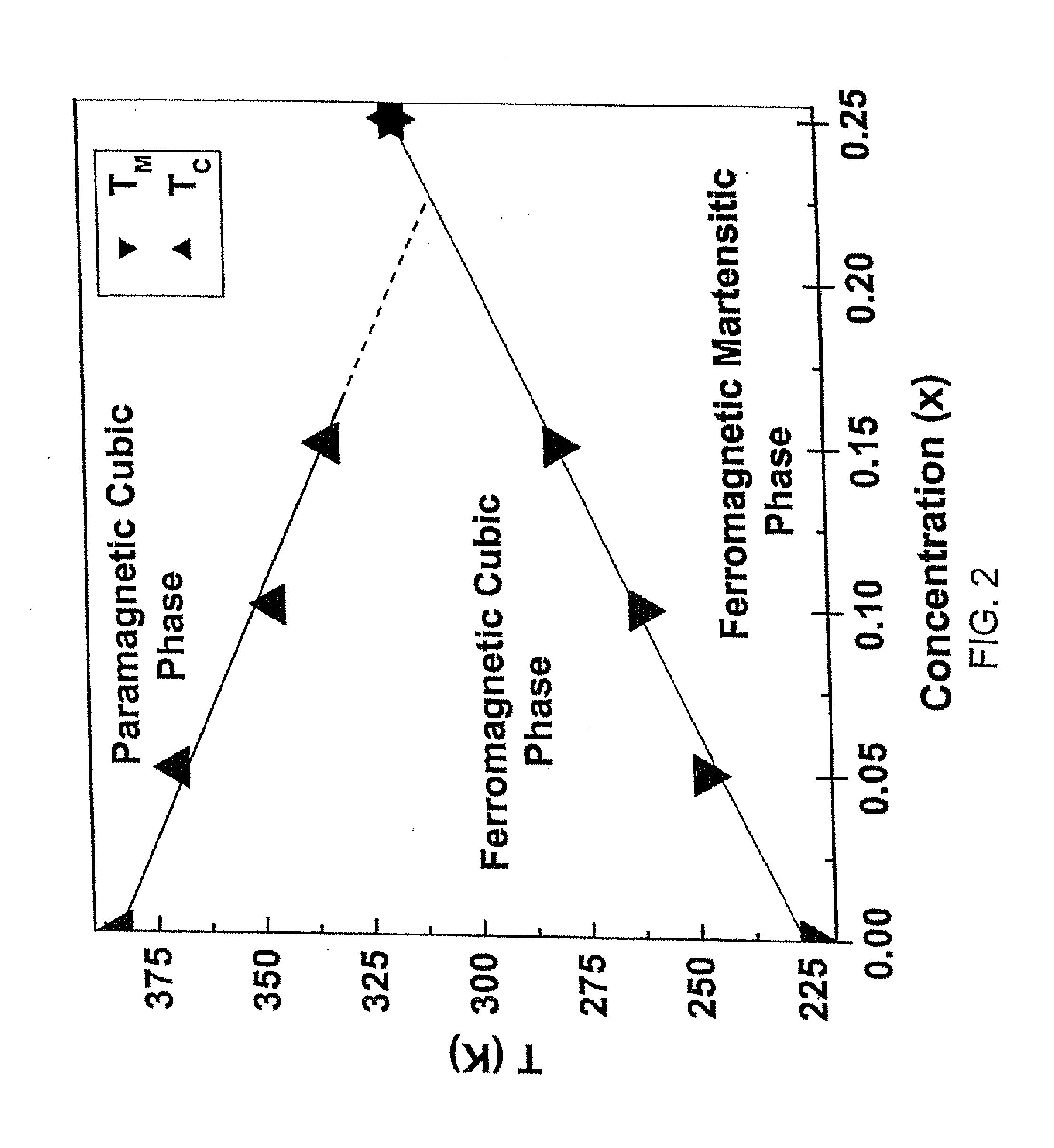Magnetic refrigerant material
- Summary
- Abstract
- Description
- Claims
- Application Information
AI Technical Summary
Benefits of technology
Problems solved by technology
Method used
Image
Examples
Embodiment Construction
[0014]Ni2MnGa undergoes two major transitions as a function of temperature: (1) a second order paramagnetic-ferromagnetic transition at TC=376 K; and (2) a magnetostructural transition from a ferromagnetic austenitic phase to a ferromagnetic martensitic phase TM=202 K. The inventors have discovered that substituting for Mn can change the transition temperatures such that TC decreases as TM increases, so that at some composition the two transition temperatures coincide. For example, in the case of copper substitution for manganese, the inventors have discovered that at copper concentrations of greater than or equal to about 0.22, the transition temperatures coincide.
[0015]As shown in FIG. 2, the substitute of copper for manganese results in a near linear decrease of TC and increase of TM, and starting at x> about 0.22, only on transition TC=TM can be observed.
[0016]FIG. 3 shows the temperature dependence of the magnetization for Ni2Mn0.75Cu0.25Ga measured during a cooling and warming...
PUM
| Property | Measurement | Unit |
|---|---|---|
| Composition | aaaaa | aaaaa |
| Magnetocaloric effect | aaaaa | aaaaa |
Abstract
Description
Claims
Application Information
 Login to view more
Login to view more - R&D Engineer
- R&D Manager
- IP Professional
- Industry Leading Data Capabilities
- Powerful AI technology
- Patent DNA Extraction
Browse by: Latest US Patents, China's latest patents, Technical Efficacy Thesaurus, Application Domain, Technology Topic.
© 2024 PatSnap. All rights reserved.Legal|Privacy policy|Modern Slavery Act Transparency Statement|Sitemap



